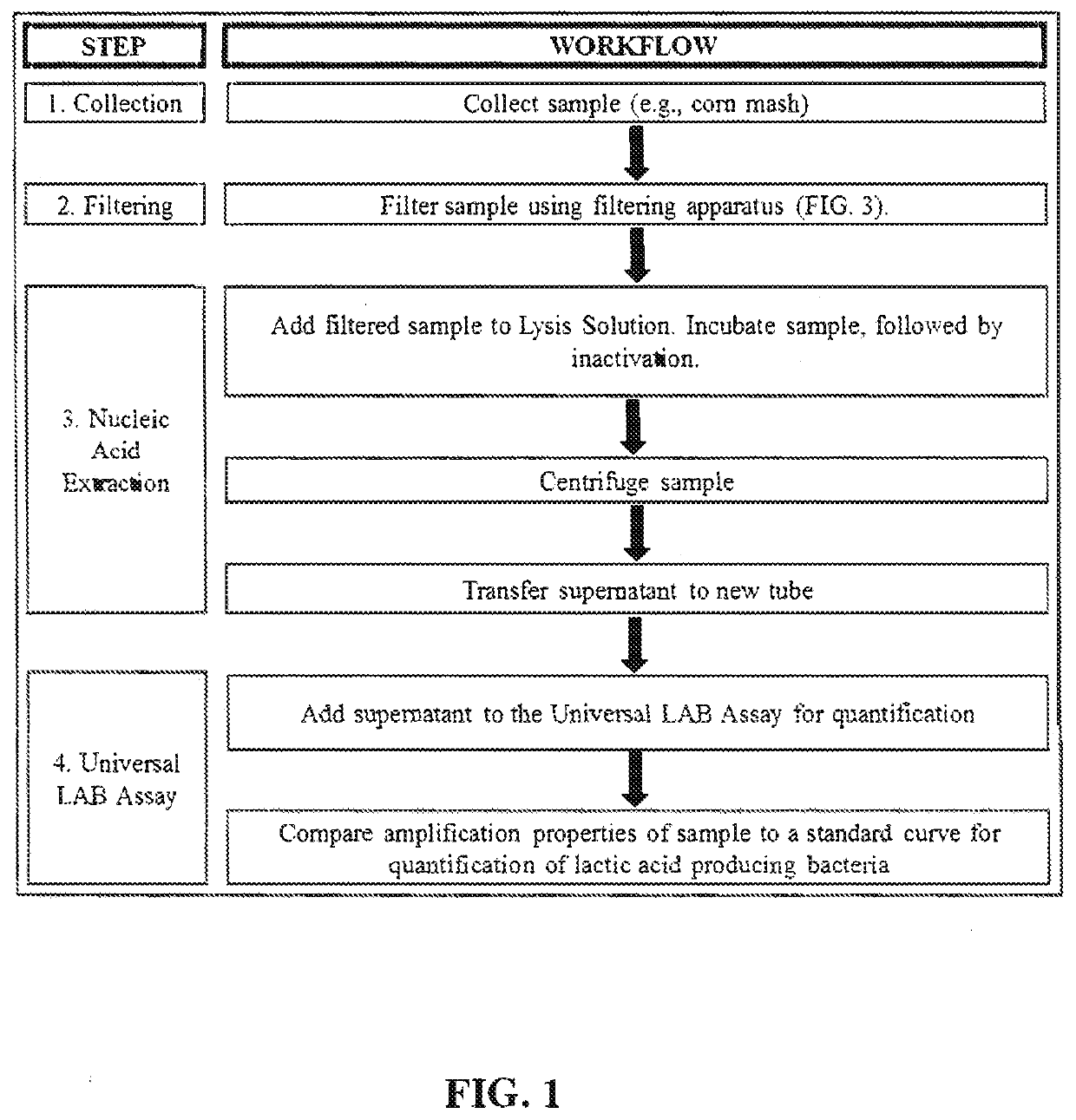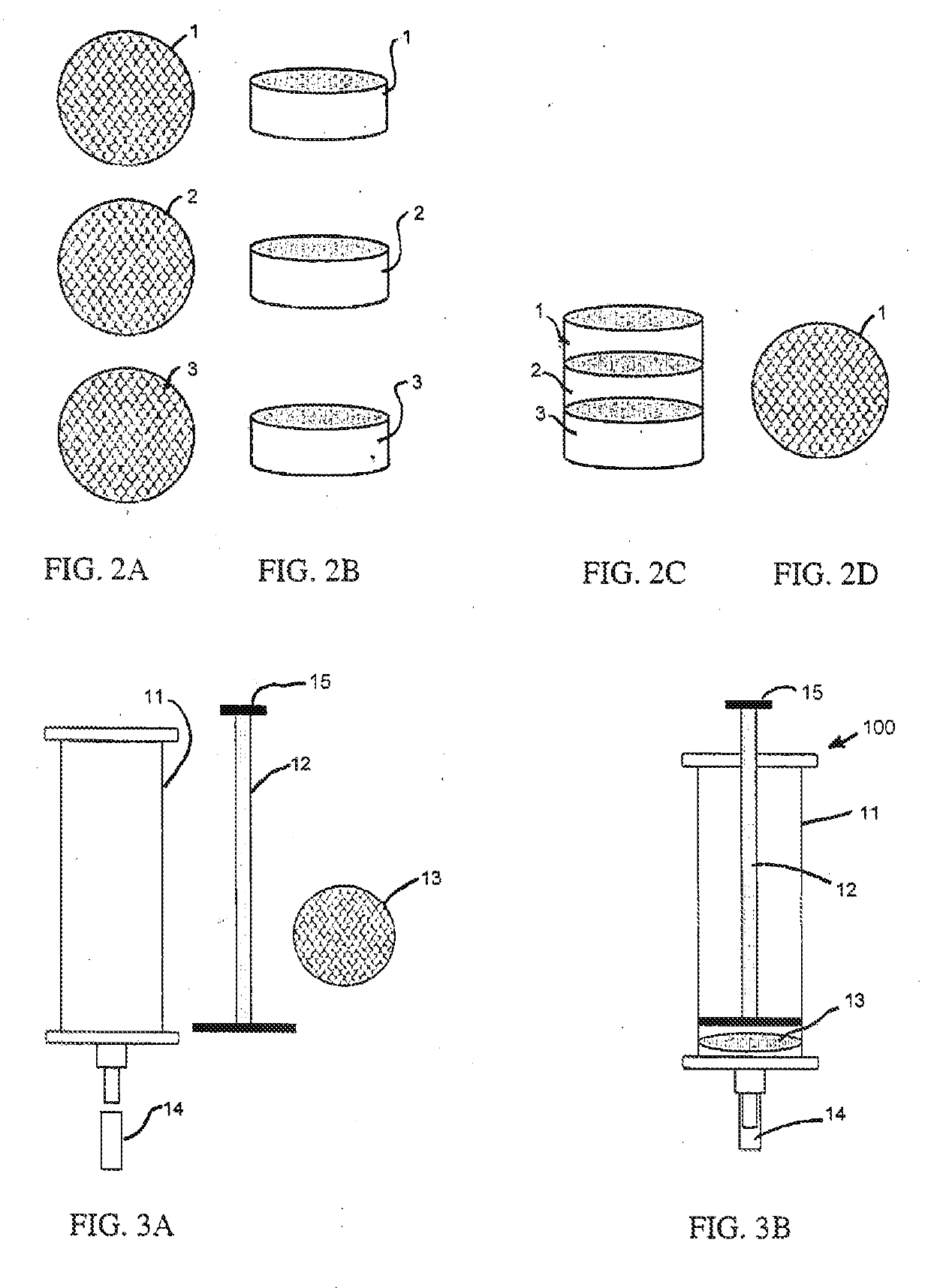Universal lactic acid bacteria quantification kit for fermentation monitoring
a technology of lactic acid bacteria and quantification kit, which is applied in the direction of dna preparation, biochemical equipment and processes, biofuels, etc., can solve the problems of plant shutdown for cleaning, affecting efficiency, and affecting so as to improve the purification of fermentation samples, the effect of reducing the number of samples and reducing the number of bacteria
- Summary
- Abstract
- Description
- Claims
- Application Information
AI Technical Summary
Benefits of technology
Problems solved by technology
Method used
Image
Examples
example 1
of LAB from a Variety of Sources
[0083]This example illustrates detection of LAB from a variety of sources using methods of the present teachings.
[0084]In these experiments, DNA from laboratory, agriculturally and environmentally-related samples (including food- and crop-related) were screened in duplicate using an assay of the present teachings. The sample sources are listed in Table 5. The reaction conditions were as described in Tables 3 and 4.
TABLE 5Samples analyzed by assays of the present teachings.CtSample NameTypeValue*ResultAcute Bee Paralysis Virus sDNA in beeBee or bee24.629PospathogenBarleyCrop31.842PosBlack Queen Cell Virus sDNA in waterBee or beeUndNegpathogenCanolaCrop34.894NegCercospora zea maydisPure culture37.165NegChickpeaCrop34.840NegChronic Bee Paralysis Virus sDNABee or bee23.311Posin bee**pathogenClavibacter michiganensis spp.Pure culture31.156PosCornCrop34.797NegDeformed Wing Virus sDNA inBee or beeUndNegwater**pathogenDekkera bruxellensisPure culture37.173Neg...
PUM
| Property | Measurement | Unit |
|---|---|---|
| Temperature | aaaaa | aaaaa |
| Temperature | aaaaa | aaaaa |
| Length | aaaaa | aaaaa |
Abstract
Description
Claims
Application Information
 Login to View More
Login to View More - R&D
- Intellectual Property
- Life Sciences
- Materials
- Tech Scout
- Unparalleled Data Quality
- Higher Quality Content
- 60% Fewer Hallucinations
Browse by: Latest US Patents, China's latest patents, Technical Efficacy Thesaurus, Application Domain, Technology Topic, Popular Technical Reports.
© 2025 PatSnap. All rights reserved.Legal|Privacy policy|Modern Slavery Act Transparency Statement|Sitemap|About US| Contact US: help@patsnap.com



